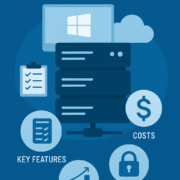How to Effectively Monitor Competitors: A Comprehensive Guide
Monitoring competitors is crucial in today’s dynamic business environment. Gaining insights into their strategies enables companies to maintain a competitive edge, ensuring that they are never caught off guard by market shifts or emerging industry norms.
Effective competitor monitoring transcends sporadic observations. It demands a systematic approach to collecting and analyzing data that can influence strategic decisions. By rigorously assessing the landscape, businesses can identify opportunities for growth and areas for improvement, ensuring they always stay one step ahead.
Understanding the Need for Competitor Monitoring
By actively observing and analyzing the market, businesses can proactively anticipate changes and strategically plan their next moves rather than simply reacting to circumstances as they arise.
Benefits of Competitor Monitoring
- Staying Ahead of Trends: Ensures businesses are always in tune with evolving market conditions and consumer preferences.
- Strategic Planning: Facilitates informed decision-making based on competitors’ actions, helping to allocate resources more effectively.
- Inspiring Innovation: Identifies gaps in the market and opportunities for differentiation, leading to the development of unique products and services.
- Enhancing Customer Satisfaction: Allows businesses to adjust their offerings to better meet the needs and desires of their customers, improving loyalty and retention.
Potential Consequences of Ignoring Competitor Actions
- Loss of Market Share: Failing to keep pace with competitors can result in losing customers to more agile or innovative companies.
- Reduced Brand Relevance: Without adaptation to market shifts, businesses risk becoming obsolete in the eyes of consumers.
- Missed Opportunities: Ignorance of competitors’ strategies may lead to missed chances for growth and expansion in new or existing markets.
Digital Footprints: SEO Competitive Analysis
Conducting SEO competitive analysis is crucial for enhancing your online visibility. By identifying the keywords your competitors rank for, you uncover areas where your SEO strategy may be lacking. Analyzing their backlink profiles can reveal insights into their site authority and suggest ways to boost your SEO credibility. Nowadays, these processes can be easier with the help of artificial intelligence.
For those looking to perform a detailed evaluation, an in-depth competitor analysis guide offers comprehensive suggestions on the process. From traffic and keyword analysis to website structure and design analysis, it equips you with the necessary tools and methodologies to conduct thorough research.
SEO competitive analysis goes beyond simply tracking competitors; it involves identifying their weaknesses and turning these into opportunities for your growth. Regularly updating your SEO tactics based on this analysis helps maintain a competitive edge in the dynamic digital marketplace.
Marketing Metrics: Campaign Analysis and Impact
Understanding and evaluating the marketing strategies of your competitors is crucial to refining your marketing efforts. Start by analyzing their advertising campaigns across various channels, including digital platforms, social media, and traditional media outlets. Look at the messaging, imagery, and overall branding they use to understand what appeals to the audience you both serve.
Next, assess the reach and effectiveness of these campaigns. Metrics like engagement rates, click-through rates, and conversion statistics can provide a clear picture of their success. Additionally, consider the frequency and timing of their campaigns to gauge how they capitalize on market trends or seasonal events.
Lastly, review their promotional strategies and public relations efforts. These can include sponsorships, community events, and press releases. Understanding how they build brand awareness and foster customer loyalty through these activities can offer insights into successful tactics that might be adapted to enhance your marketing initiatives.
Consumer Connections: Engagement and Feedback Loop
Understanding how competitors engage with their audience can provide valuable lessons in improving your customer interactions. Start by observing their social media activity. How frequently do they post, what kind of content do they share, and how do they interact with comments? These insights can help refine your social media strategy to foster stronger connections and increase engagement.
Next, examine how competitors handle customer feedback. Do they respond quickly to customer inquiries and complaints? Are their responses personalized or generic? Learning from their approach can help enhance customer service practices, making customers feel more valued and supported.
Finally, assess any loyalty programs or community-building efforts they employ. These initiatives are powerful tools for maintaining customer engagement and encouraging repeat business. Analyzing these aspects can inspire similar strategies in your business, aimed at boosting customer satisfaction and loyalty.
Innovation Inspection: Product Development Trends
Analyzing the product development trends of competitors can uncover key insights into market demands and technological advancements. Start by tracking new products they launch, noting features, target markets, and pricing strategies. This will help you understand their focus areas and innovation pace, allowing you to identify areas where your product could offer something different or better.
Moreover, pay attention to the technology and processes they use. Are they implementing cutting-edge technologies or optimizing existing ones? Understanding these aspects can provide a competitive advantage, enabling you to adopt similar innovations or develop superior technologies that meet the evolving needs of customers.
Lastly, keep an eye on how they handle product feedback. Do they quickly iterate based on customer input? Observing these practices can guide your product development cycle, ensuring that your offerings are continually refined and responsive to customer needs, thereby enhancing product relevance and appeal in your market.
Financial Foresight: Fiscal Health and Investment
Reviewing the financial health and investment strategies of competitors is a critical aspect of comprehensive market analysis. Begin by examining their financial statements, available through annual reports or financial news. Look for trends in revenue, profit margins, and investment in research and development. These indicators can provide insights into their financial stability and priorities, which might suggest areas where they are planning to expand or innovate.
Additionally, keep track of their funding activities, such as securing new investments or launching IPOs. These moves can signal growth intentions and provide clues about the sectors or markets they are targeting. Understanding these strategies can help you anticipate market shifts and potentially adjust your own investment strategies to stay competitive.
Lastly, consider the broader economic context in which these financial decisions are made. Factors such as changes in regulatory policies or economic downturns can influence competitors’ financial strategies. Staying informed about these external influences helps you better predict future moves and prepare your business to respond effectively.
Wrapping Up
Effectively monitoring competitors is not just about observing—it’s about strategically responding to the insights gained. By embracing a detailed and dynamic approach to competitor analysis, businesses can not only adapt but also innovate, ensuring they remain ahead in their industries. This ongoing vigilance is essential for thriving in a competitive landscape and securing a sustainable future for your business.




